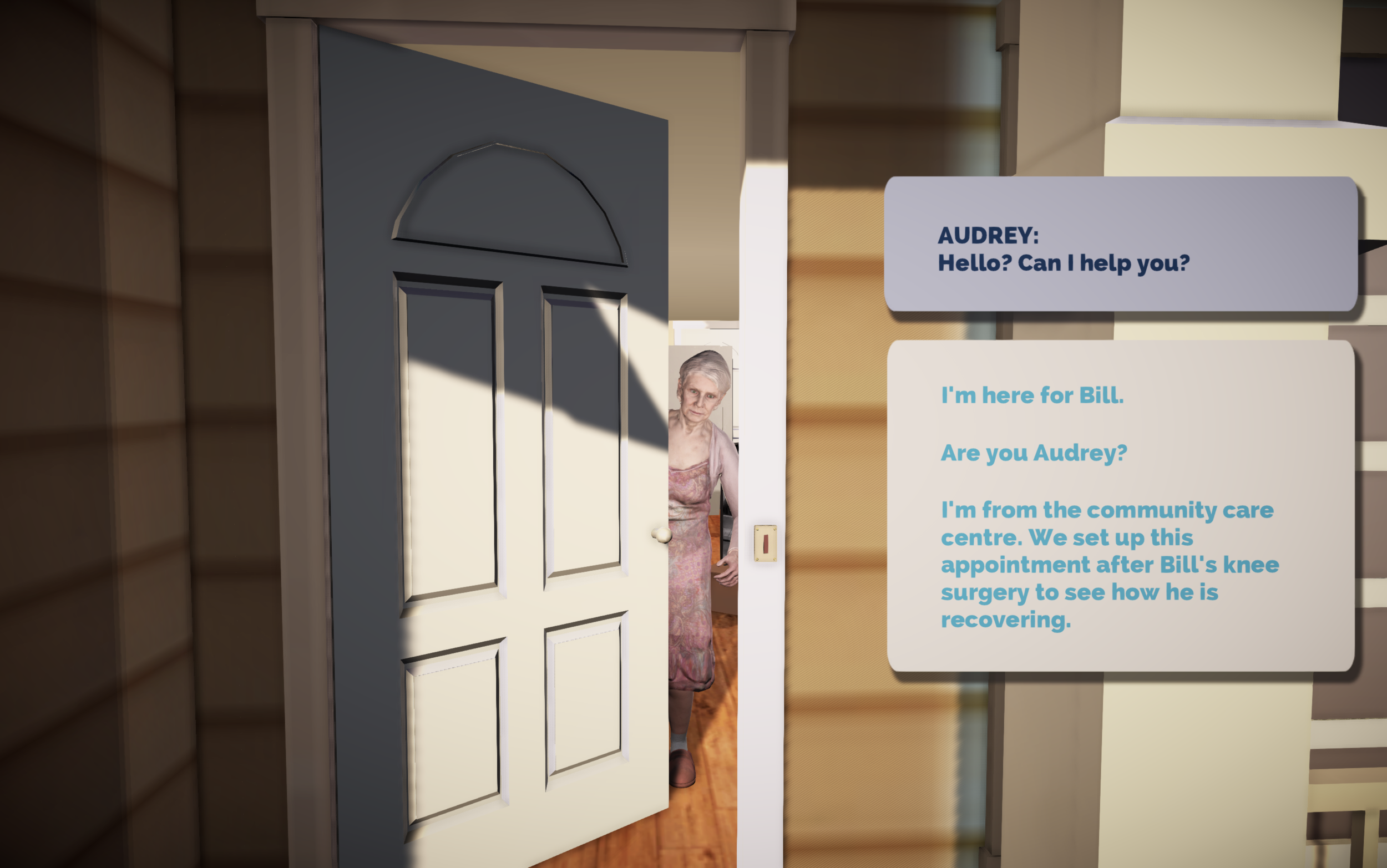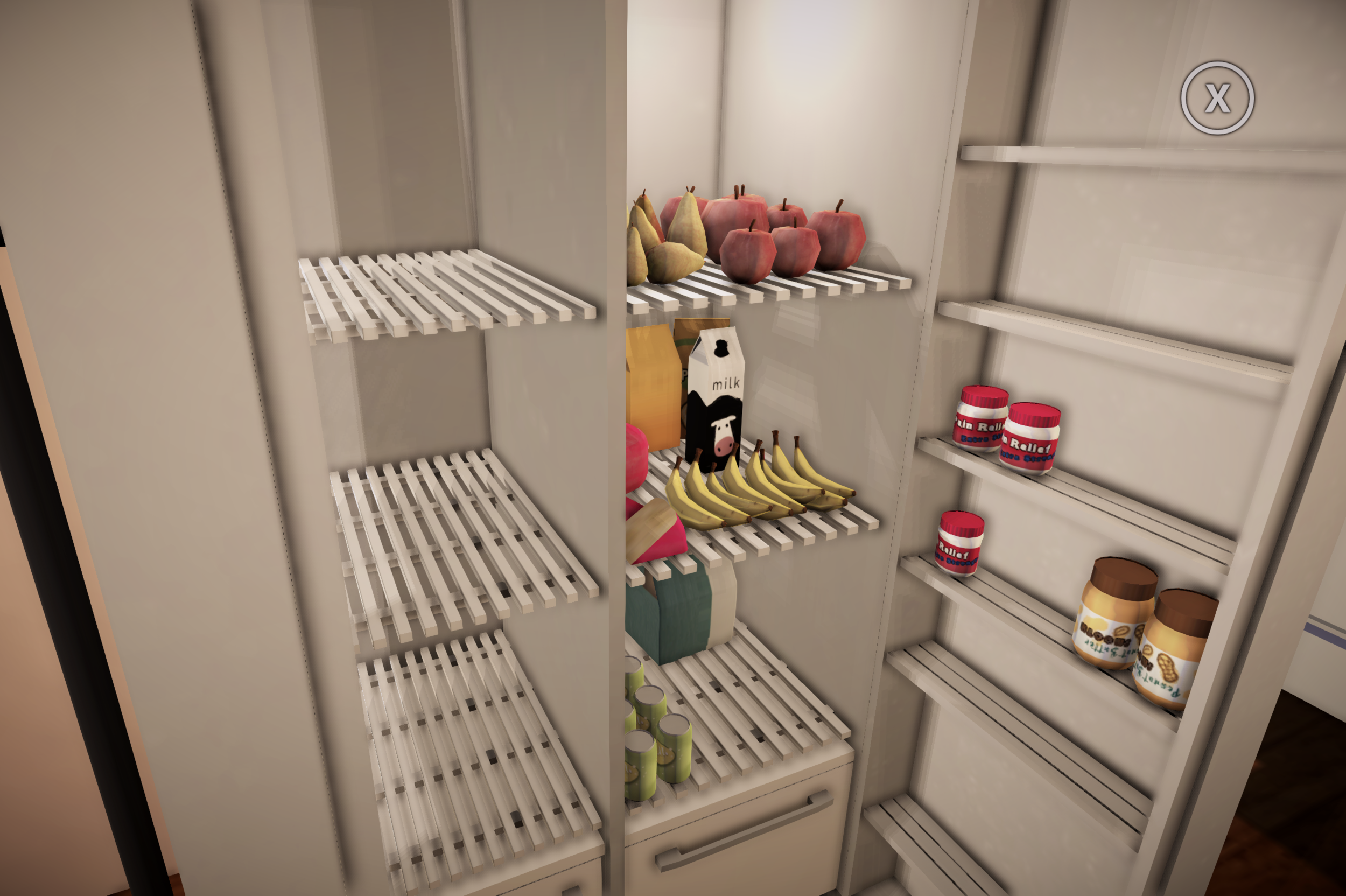Senescence: A virtual dementia homecare simulation
Senescence is a virtual dementia homecare simulation. Designed as a four episode, longitudinal virtual experience, players will get to interact with the two non-playable game characters (Bill and Audrey) over a simulated three-month timeframe. As part of the gameplay, players will be able to interact with BIll and Audrey through interactive dialogue options and other mouse-clickable actions. Due to the size and complexity of the game play, players are able to select from a variety of dialogue and navigation options from which to interact with Bill and Audrey. Further, because of the open-concept nature of Senescence, how a player elects to respond and interact with Bill and Audrey, including navigating their home, will impact various outcomes of the game play and episode development.
Designed as an interprofessional simulation experience for health sciences students at Western University (Faculty of Health Sciences), players of the game do not represent a singular clinician type; rather, students of various health sciences disciplines can select approaches and assessments of particular discipline expertise or interest to conduct with Bill and Audrey. As the first gamified dementia homecare simulation, Senescence hopes to blend the essence of developing therapeutic-relationships with homecare clients, clinical assessment, and environmental assessment into a self-contained, four episode videogame experience for clinician education.
Meet Bill and Audrey
In Senescence, a player is introduced to two characters: Bill and Audrey. Bill has recently been discharged from hospital from knee surgery and is recovering at home. His partner, Audrey, is caring for him. You are a clinician who has come to visit Bill and Audrey to conduct a home visit.
Many objects in Bill and Audrey’s household can be interacted with, including appliances, supportive devices, and even the TV remote. Due to the open concept nature of the game, players are able to navigate freely throughout the household and interact with BIll and Audrey in numerous fashions. That said, if best practices related to the development of therapeutic relationships are not upheld, Bill and Audrey may respond accordingly!
Dynamic characters and environments that change over time
As a four episode virtual experience spanning a three month timeframe (Fall & Winter), a player will be able to observe how weather, client recovery, and other medical conditions influence the behaviours and actions of both Bill and Audrey. It will take keen and observant players to notice and recognize changes in the household environment over the four episodes, and to generate care plans accordingly.
Unlike other simulation experiences that focus primarily on clinical reasoning and diagnostics, Senescence has been purposefully developed to embed various clinical, environment, and psycho-social factors into story and character development.
Interprofessional education potential
Since Bill has recently returned from hospital for knee surgery, what sort of modifications would be made to this washroom to ensure his safety?
As an interprofessional simulator, clinicians students of various discipline backgrounds will have the opportunity to consult on recommendations and interventions to assist Bill’s recovery and Audrey’s role as an informal caregiver. From issues related to household tripping hazards, Bill’s pain management, hearing aids usage, mental health, and caregiver burnout, Senescence mergers a massive variety of clinical subject matter into a four episode experience for clinician students.
Example of Gameplay dialogue options
As a dynamic simulation, all objects a player can interact with change over time, as the four episodes progress.






